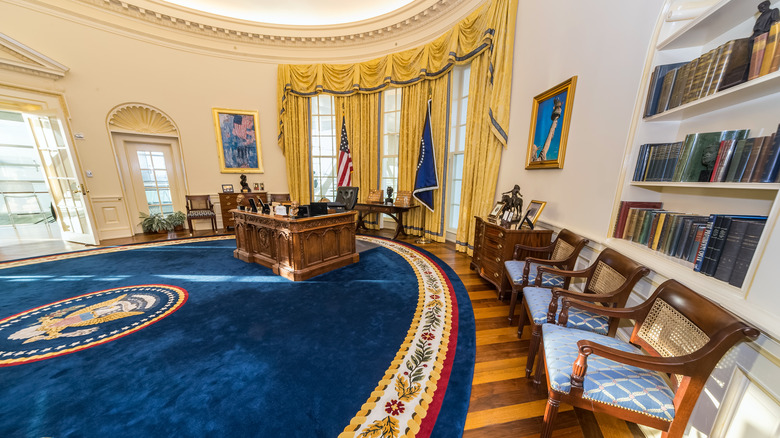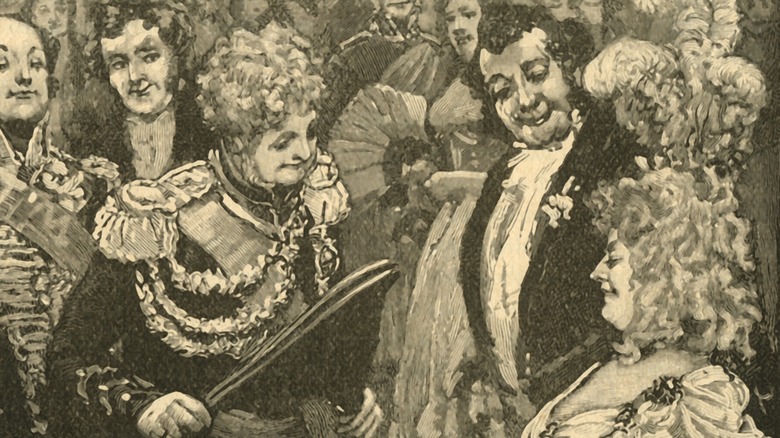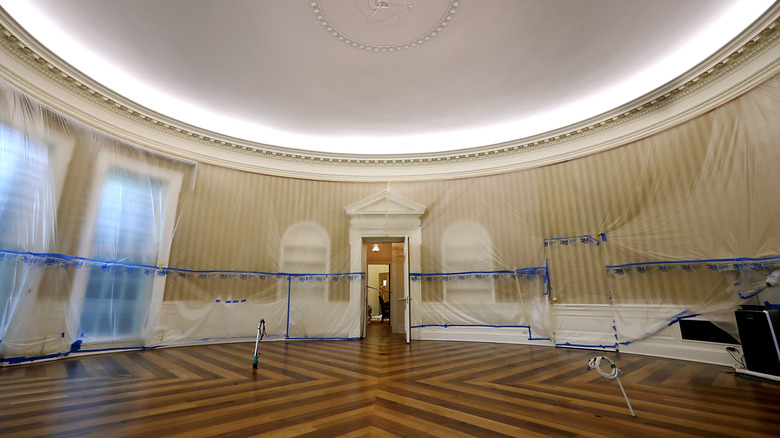The Real Reason The Oval Office Is Oval
The Oval Office, seen on the news and in countless historical photographs, has become synonymous with the U.S. presidency itself. It is the workspace of the president of the United States, located in the West Wing of the White House, and it is indeed oval-shaped. The reasons for the shape go back to the first U.S. President George Washington, according to the White House Historical Association.
Even though Washington did not live or work in the White House, which was under construction during his presidency, he was partial to the architectural style of oval-shaped rooms. Washington had the President's House in Philadelphia remodeled to his specifications in 1790, replacing the straight walls with semi-circular walls at the rear of the building. It was against this circular backdrop that the president received formal guests. One of these guests was architect James Hoban, whom Washington commissioned to work on plans for the new White House to be built on the strip of land between Maryland and Virginia, on the shores of the Potomac River.
A remnant of English court life
It was President George Washington's fondness for a formal greeting ceremony known as a "levee" that caused him to commission rooms with rounded walls, first in Philadelphia and later in Washington, D.C. During a levee, guests arranged themselves in a semi-circle, and the president would go around to each one and exchange pleasantries, according to The White House Historical Association. Small bows were made, but no handshaking took place. This unique formal ceremony was a remnant that survived from English court tradition.
Washington commissioned — but never used — the oval-shaped rooms of the White House. According to Reader's Digest, the White House took eight years from when construction started until it was occupied by a president. John Adams, the second president of the United States, was the first to take up residence in the new White House in 1800. Three rooms in the new presidential residence and seat of government were oval-shaped, including the well-known Blue Room.
President Adams used the oval-shaped rooms to hold levees, as he continued the tradition started by President Washington in Philadelphia. However, Adams' successor, President Thomas Jefferson, ended the tradition because it reminded him too much of the monarchy. Though levees no longer took place in the White House, the oval-shaped rooms remained.
An office for a president
The Oval Office was not part of the original White House design. Early presidents conducted their day-to-day work wherever it pleased them, according to The White House Historical Association. Thomas Jefferson chose a room in the southwest corner of the building, and John Quincy Adams preferred the second floor. It wasn't until 1909 that President William Taft added the Oval Office when he expanded the West Wing, according to The White House Historical Association.
The Oval Office was modeled architecturally on the historic Blue Room. It was moved to its current location overlooking the Rose Garden by Taft's successor, Franklin D. Roosevelt in a 1934 expansion of the West Wing. The Oval Office has been used by presidents ever since. It is common for each president to refurbish the historic room. According to the White House Museum, the only two recent presidents to not give the room a makeover were Dwight Eisenhower and Jimmy Carter.


